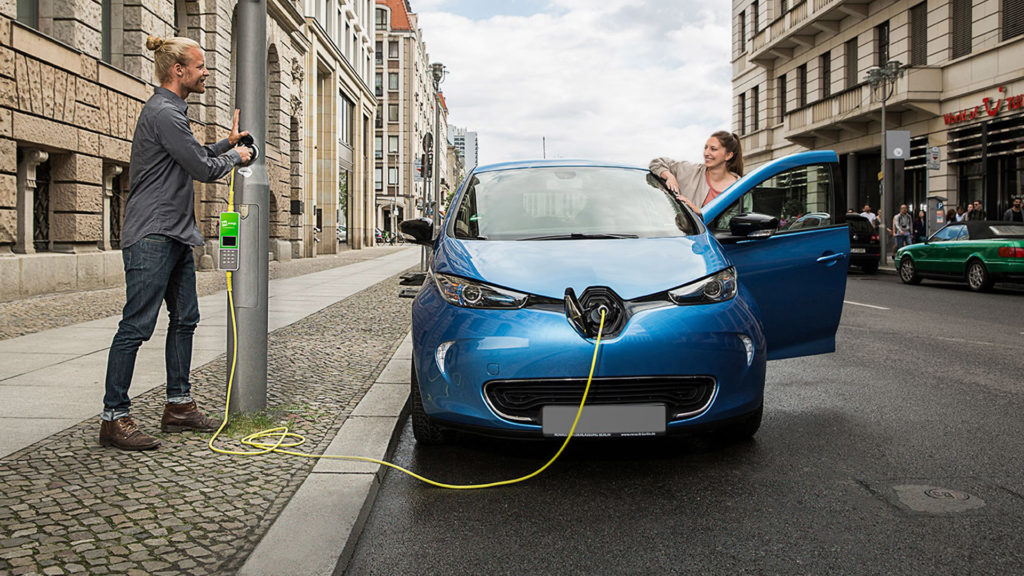Last updated on May 9th, 2020 at 06:04 pm
When you think about EVs in the USA, you imagine cars sitting in dedicated garages, next to large houses with a big, private driveway and no cabling issues. Certainly, there are lots of houses outside urban areas in the UK where a garage or off road parking is possible. The challenges really kick in when you're talking about flats, terraced housing or – worst case scenario – terraced houses that have been converted into flats. WhichEV considers one way in which local authorities can help prepare their towns and cities for the move to electrification.
In every survey we have seen on the subject, range anxiety always comes out top of the list of reasons why drivers might resist the move to buying an EV. Electric vehicle evangelists point to the fact that no one has a petrol station at home and that you always need to drive your fossil fuel vehicle to the local petrol station to fill up – whereas those with the appropriate space at home, can re-charge over night and be guaranteed a full battery in the morning.
The crux of the issue is how long it takes to charge your car. Although most manufacturers are making positive moves toward faster charging, it can still take 20-40 minutes to get an 80% charge. Some are working on a ‘burst mode', where even a 10 or 15 minute charge can give you a useful extension on your range.
With a bit of planning, there's no reason why you would need to have a charger installed at home, but the general population will need some kind of assurance that an overnight charge is possible.
The big challenge for overnight charging with a terraced house or block of flats, is that you can't have a power line trailing over a foot path. Also, you need to have commercial wiring available, that connects the street mains to the charger. Enter the lamp post method.
Lamp posts are always right next to roads and they already have street mains. That inspired Brighton to try something new. The cost of the project was met with a grant of £300,000 from the Office of Low Emissions and £100,000 from Electric Blue, a company dedicated to rolling out affordable charging for vehicles. Specifically, they help fund projects that will let them make a small profit on the power being drawn after successful implementation. The narrow, colourful streets around Brighton are full of terraced housing and will make for an interesting project.
30 areas with high demand for parking in Brighton were selected and 207 new charge points were installed, ready to provide overnight charging for residents and visitors. You don't pay to park, but you do pay 28p per killowatt hour for a charge. That's about the same rate as street charging in central London – and around double the price of charging at home. For an electric vehicle with a 40kWh battery, that means £11.20 to fill up as opposed to £5.60 to recharge at home.
It's worth bearing in mind that even if a public charging spot costs 100% more than charging your vehicle at home, it's still way cheaper than a tank of petrol/diesel – plus you have free parking in town at the same time.
Electric Blue has also put together an investment plus grants fund of almost £500,000 to install a series of rapid chargers for taxis in Brighton. The council has also picked up nearly £90,000 in research funding to investigate technologies that will allow for a greater number of cars to be charged at the same location, at the same time.
Alex Calnan, MD of Electric Blue, explained “We're hugely excited about this partnership with Brighton & Hove City Council and commend the authority in their bold ambitions to vastly improve the city’s zero-emission transport options, with a comprehensive range of charging possibilities. We know that the key to driving the uptake of electric vehicles, on a mass scale, is to first provide the appropriate and accessible infrastructure…and of course power it with 100% renewable energy! Brighton & Hove is widely perceived as the country’s green-thinking capital, and we are thrilled to join them on this venture”.
OVO Energy are working with Berlin-based Ubitricity on a pilot scheme to transform 50 lamp posts in London into charging points. Smart cables will be used to track the power used and to assist with billing.
Councillor Anne Pissaridou, chair of the environment, transport and sustainability committee, told media, “Many drivers have told us that they would consider buying an electric vehicle, but have been deterred by the lack of street charging points. We hope that the introduction of these new lamp post chargers will make electric vehicles more attractive for motorists, and help us to continue our work to reduce pollution and improve air quality in the city”.
Similar installations in St Albans, Cambridge and Coventry have all added to the knowledge that companies like Electric Blue and OVO Energy will bring to their next projects. It might not be perfect and there could easily be too much demand for the service, but at least its one useful approach to tackling the issue of charging for drivers without off-street parking.
